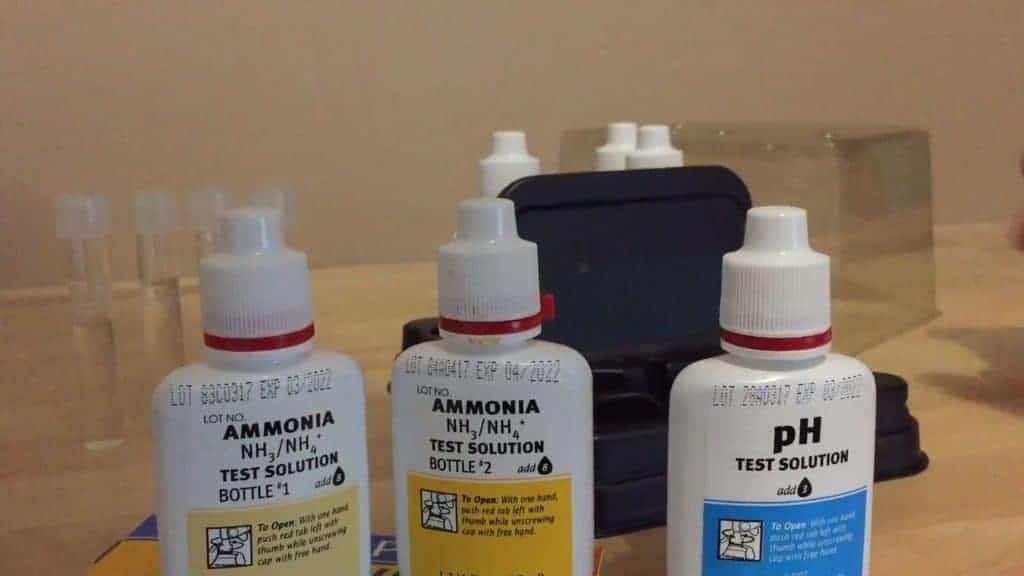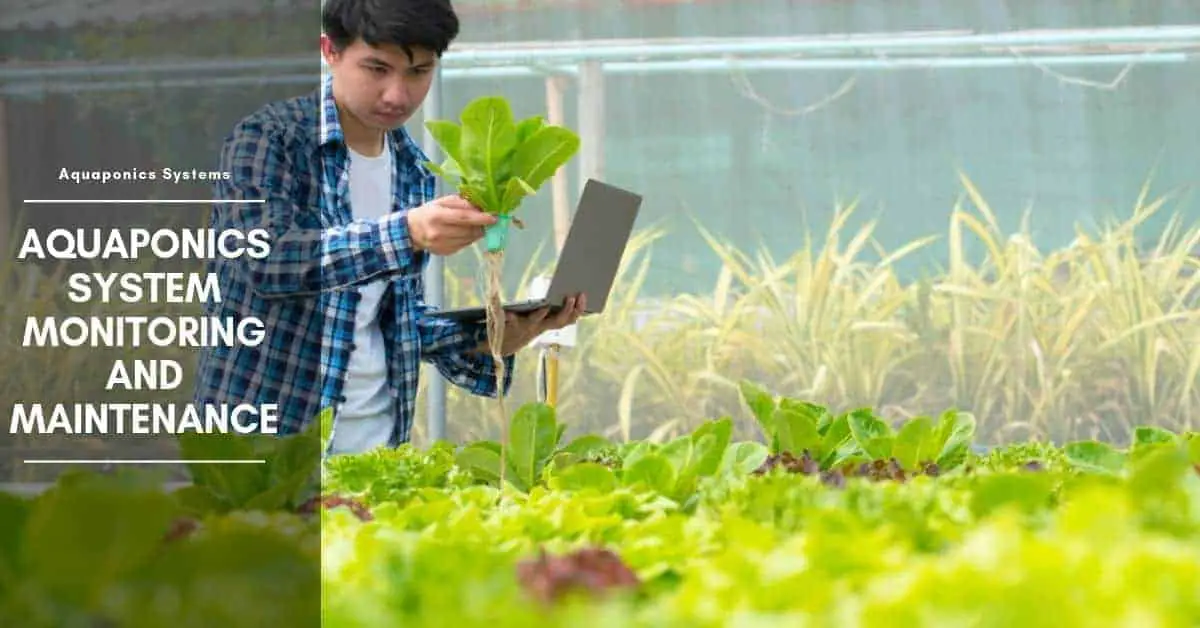Although a well-run aquaponics system may require little actual maintenance, daily monitoring is essential. Fish and bacteria colonies are very fragile; small fluctuations in pH or even temperature can cause the destruction of the system within hours. Changes occur quickly, and plumbing malfunction can be disastrous, so the more often you can pass an eye over your system and use a test kit, the better. This is why it is important to put in somewhere convenient and accessible.
Good system monitoring and some Arduino monitoring system comprise of observation as well as testing. Observational monitoring involves anecdotal evidence and the observation of fish and plant appearance and behavior, water appearance, flow volumes, and even the sound of pumps and filters. Anything abnormal could be indicative of a problem, and the sooner you deal with it, the better.
Observational monitoring is a vital process. However, unless you are a seasoned grower with a very mature aquaponics system, this should not be a substitute for regular water testing. Water testing is necessary to ensure that the elements of the system are in balance, and ultimately the neglect of this key process can lead to system death if ammonia levels reach high enough proportions to cause mass fish die-off.
Water monitoring
Monitoring water qualities is one of the most important tasks undertaken in an aquaponic system. In a new system, while system cycling or when adding fish stock, monitoring of pH, ammonia, and nitrates should be undertaken daily. In a more established system, testing can be reduced to once every 3-7 days, or whenever there is an indication of abnormality. Testing of water that will be added to the system is also recommended, as is testing the system whenever changes are made. It is good practice to keep a log of test results as a reference in the case of problems.
pH testing
Significant changes to pH can be an indication of systemic problems, and the changes themselves can also have an adverse effect on system health. Additionally, it is natural for systems to become gradually acidic over time as nitric acid is a natural byproduct of the nitrification process. Therefore, it is important to monitor pH to ensure that fluctuations are minor, and to give ample time to adjust pH as necessary.
There are a variety of ways that the pH of a liquid can be tested. Most people are familiar with litmus paper and Universal Indicator, both of which are economical and easy to use. For the more dedicated grower, it may be worth investing in an electronic pH monitor.
Temperature
Temperature fluctuations can have a major impact on system health. Most growers have an electronic thermometer installed in the biofilter or fish tank. A thermometer that records daily highs and lows is particularly relevant to monitoring fish health.
Ammonia, nitrite and nitrate testing

There are a variety of testing methods that can be used to measure levels of ammonia, nitrite, and nitrate in an aquaponic system. In all cases, remove a small sample of water for testing and discard it after the results have been recorded.
Liquid indicator tests, which are used as per Universal Indicator, are the most reliable way to test for nitrogen compounds. Different test kits will be needed for ammonia, nitrite, and nitrate, and are available from aquaponic suppliers.
API STRESS ZYME Freshwater and Saltwater Aquarium Cleaning Solution 16-Ounce Bottle
API ACCU-CLEAR Freshwater Aquarium Water Clarifier 4-Ounce Bottle
12% OffAPI GENERAL CURE Freshwater and Saltwater Fish Powder Medication 10-Count Box
15% OffPaper test strips, much like litmus paper, are also affordable but less reliable than liquid tests.
For the very dedicated grower, electronic meters are available. These are extremely accurate but expensive. Again, a meter will be needed for each chemical being measured.
Water hardness
Water hardness should also be regularly measured. In hydroponics, Electrical Conductivity (EC) and Parts Per Million (PPM) meters, which are electronic testers, are used to measure the proportion of minerals and nutrients in a liquid. These meters are also suitable for establishing the “hardness” of a water source. However, as they do not differentiate between the types of minerals in the water, which makes them less useful for the regular monitoring of an aquaponic system.
A better option for aquaponics is purchasing liquid test kits for general hardness and carbonate hardness. As carbonates help to balance out fluctuations in pH and are sometimes added to an aquaponic system for this purpose, it is better to use these liquid tests in order to establish an understanding of exactly what is causing your water hardness.
System adjustments
When systems are monitored regularly, major adjustments are uncommon. However, when adjustments are required, water should be manipulated in small amounts outside of the unit and added gradually wherever possible, in order to prevent fluctuations which may adversely affect fish health. The only exception to this is in the case of ammonia or nitrite toxicity, which requires immediate dilution.
pH adjustment
In the case of extremely high or low pH, additions to the water can be used to establish a balance. When adjusting pH, add the chemicals gradually, testing regularly; a small addition can cause significant changes. pH adjustment will be necessary where a water source is well outside of the ideal range. In this case, adjustments should always be made to the water before adding to the aquaponic unit. Adjustments to the unit itself are unlikely to be necessary, except to counteract gradual acidity; even, in this case, changes should be made to water that is then gradually added to the system.
In the case of mildly basic water with a pH of 7-8, it is likely to reach a more ideal range once the system cycling process is complete. In extreme cases, phosphoric or nitric acid can be used to lower pH. Acidity or low pH can be raised through the addition of calcium or potassium hydroxide. In the case of the natural acidification of the system, the addition of calcium carbonate or potassium carbonate is recommended. Adding a quart (liter) of crushed egg shells, sea shells, limestone, coral or grit to the system will provide protection against pH fluctuations.
Ammonia and nitrite toxicity
If ammonia or nitrites increase above the recommended level of 0.00005 ounces per quart (1-2 mg per liter), the system requires immediate dilution. Remove 1/3 of the water and replace with fresh water before retesting. Repeat as necessary.
Regular maintenance
Beyond testing and adjustments, there is also regular maintenance required in order to ensure a functioning aquaponics system. When cleaning system parts, do so with fresh water only, as soap and cleaners may contaminate the system, killing beneficial bacteria and fish. In the case of contamination, a salt-bath can be used to sterilize materials.
Pumps
To maintain your pump, remove the filter and flush in several buckets of clean water every week. Check the fittings and flush the hoses as well.
Sediment Filters
Screens and sieves should be rinsed daily to remove accumulated solid waste. Particle filters and mechanical filters should be cleaned thoroughly each week. If media is used, treat as described below.
Fish tank
Any uneaten food or solid waste will need to be removed from the bottom of the fish tank every 3-7 days, depending on stocking density.
Biofilters
Unless it has been colonized by unwanted bacteria or algae, the biofilter and the media contained within should not be disturbed.
Growing media
The media contained in grow beds houses much nitrifying bacteria. As such, more than ¼ of the media should never be removed at any one time. That said, the media does need washing or flushing to remove accumulated salts and prevent colonization by unwanted bacteria. Clean the media by flushing well with fresh water, and scrubbing or agitating to remove any particles. Clay beads need particularly gentle handing. NFT tubes can be treated as per growing media.
Water levels
While aquaponics is a closed system, some water will be lost to evaporation and transpiration. Monitor water levels and top up the system every 7-14 days as needed, following standard procedure for additions.
Waste disposal
If discarding water from the system or from cleaning, it can go into a standard sewer or septic system. However, if diluted, this water also makes an excellent liquid fertilizer for soil-grown plants. In the case of ammonia or nitrite toxicity, extreme pH or high levels of solid waste, water can pose a hazard to the natural environment and should be diluted at a rate of 10:1 prior to disposal. Water, where plant or fish disease has been identified, may be a biohazard and unless a sewer system is available for disposal, authorities should be consulted.

Hi, my name is Sean, and I’m the primary writer on the site. I’m blogging mostly about freshwater and saltwater aquariums, fish, invertebrates, and plants. I’m experienced in the fishkeeping hobby for many years. Over the years I have kept many tanks, and have recently begun getting more serious in wanting to become a professional aquarist. All my knowledge comes from experience and reading forums and a lot of informative sites. In pursuit of becoming a professional, I also want to inspire as many people as I can to pick up this hobby and keep the public interest growing.
Read more about Sean.
Please join also my Facebook group.















